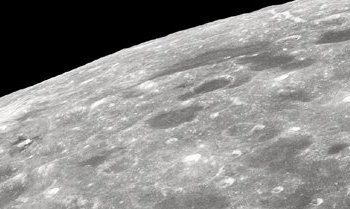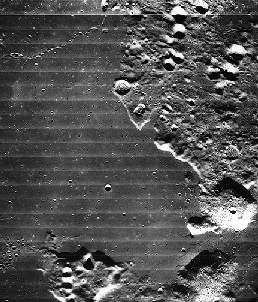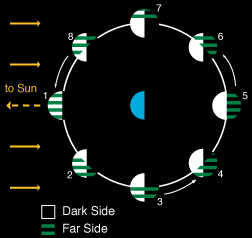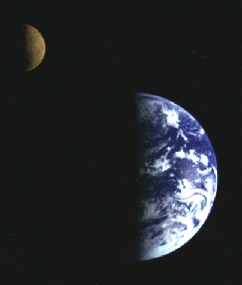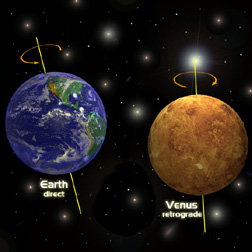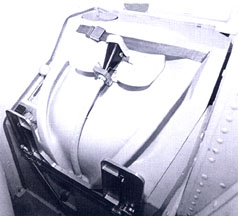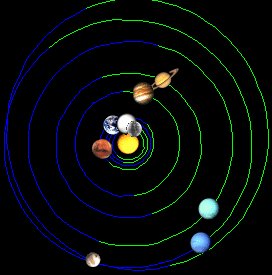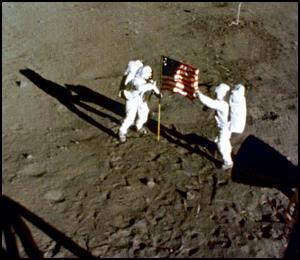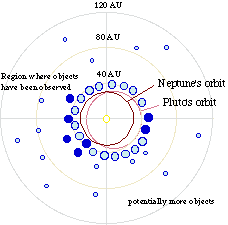Click on image for full size
Courtesy of NASA
What are the flat surfaces on the Moon called? What is maria? What are lunar highlands?
What phase was the Moon in on December, 22 1962? How long does it take the Moon to travel from one phase to the next?
Suppose that the Moon spun twice on its axis during each orbit around the Earth. How would study of the Moon from the Earth be easier?
If the Moon is tilted only slightly with respect to the Sun, do the lunar poles receive nearly constant sunlight?
Wow! More Moon questions! Okay, here goes... There are only two basic types of regions on the Moon's surface. Dark regions on the Moon are called maria. They are smooth, flat, low-lying plains with few craters. The light-colored highlands are hilly and are covered with craters.
The U.S. Navy has created a web page where you can find the moon phase for any day. Check it out! The time between successive new moons is 29.5 days. Say there are 8 phases of the Moon, New Moon, Waxing Crescent, First Quarter, Waxing Gibbous, Full, Waning Gibbous, Last Quarter and Waning Crescent. So that's 3.69 days from one phase to the next.
We can only see half of the Moon from Earth. The Moon is, very simply put, locked into a specific orbit around the Earth so that we only see one side. If the Moon spun twice during each orbit around the Earth, it wouldn't be locked into that orbit and we could see the far side of the Moon from Earth. As it is now, we can only see the far side of the Moon when a spacecraft takes a look for us.
The Moon is actually titled 5 degrees with respect to the ecliptic. So, yes, the poles do receive NEARLY constant sunlight. You can think of the Moon having two sides at any given time, the side facing the Sun and the side facing away from the Sun. If you stand anywhere on the side facing the Sun (from the poles to the equator), you'll be in NEARLY direct sunlight (unless you're in a crater or behind a hill!). And on the side facing away, it'll be really dark! That's why on the Sun side of the Moon, temperatures could reach 127 degress C (261 degrees F) and on the dark side, temperatures could go as low as -173 degrees C (-279 degrees F).
Submitted by Nicholas (Rhode Island, U.S.A.), Megan, Vilma (Texas, U.S.A.), Craig (North Carolina, U.S.A.), Margaret (Oklahoma, U.S.A.), Vicky (New York, U.S.A.), Joni (West Virginia, U.S.A.)
(January 12, 2001)


